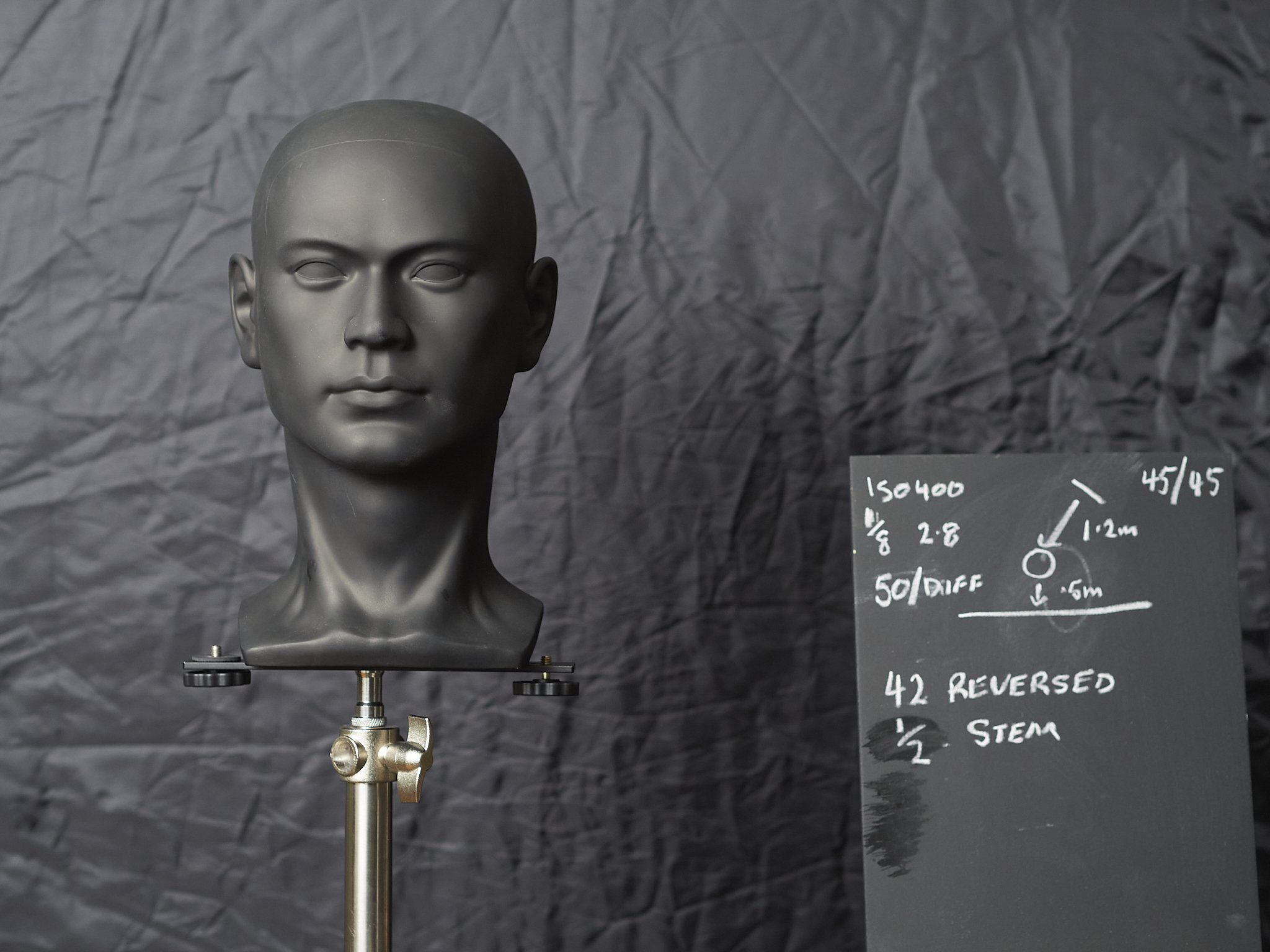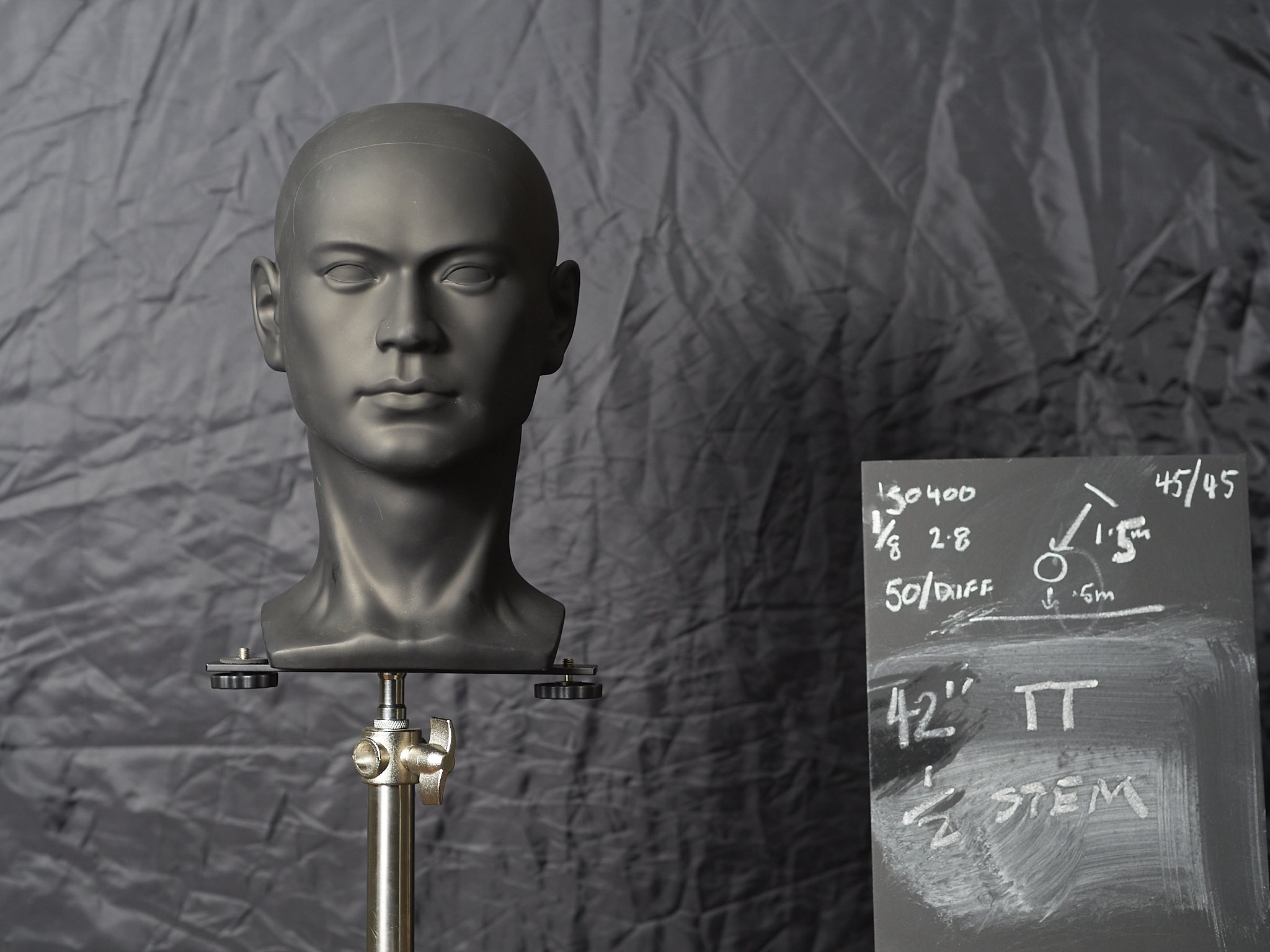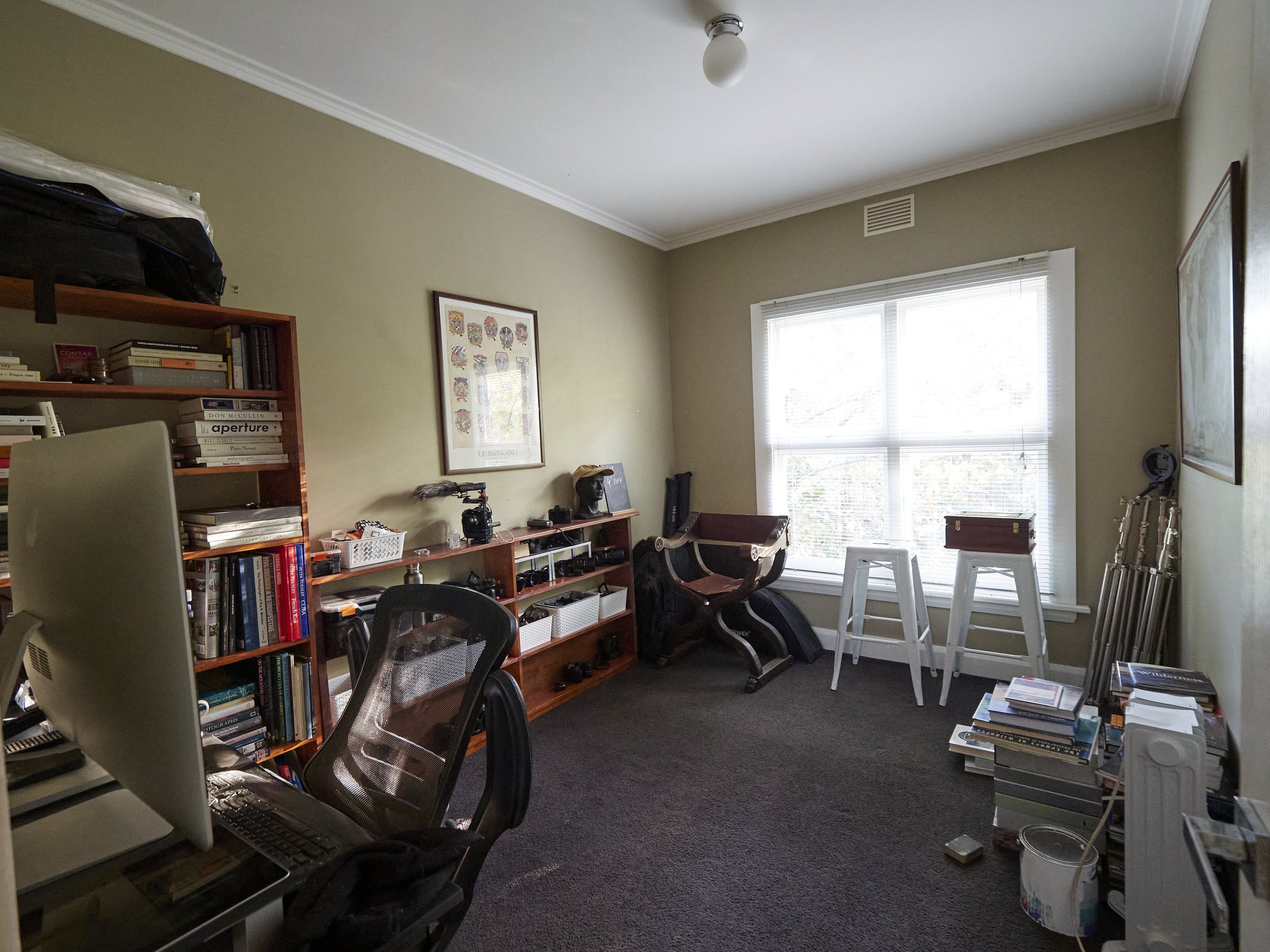Butterfly or Paramount lighting is a style I am drawn to, so I gave it a go.
A 4’ Godox octa just above Meg* and a small reflector (soft silver), with a hand held flash fired into it for fill. The flash units were at their lowest settings (1/128), with the maximum zoom width setting and dome diffusers attached to weaken their effect and still they were close to too much. The fill created the catch light, the diffuser is a nearly invisible soft blob at the top. I also tried the K & F Black Mist.
Gently, almost gingerly in search of a signature style to call mine (can’t force it, just follow the little voices until it feels right), I also went back to an old favourite, the square format, which I think for portraiture is the “right” shape.
Horizontal has the advantage of camera “rightness” and always allows cropping, but tends to enforce rules of composition, while a vertical or portrait orientation definately forces compositional realities and can feel cramped and “done”, while a square lets you frame as you wish within the unbiased frame after being originally shot as a rectangle. It is directly opposed to the wide screen 16:9 or wider used for video, so it seems I am drawn to extremes.
I will try this again with the 42” brolly in both shoot through and reversed configurations. Straight through is apparently close to a beauty dish in effect, a butterfly favourite, but the reversed may add the extra softness I want without losing brilliance.
*
*Something I have noticed since setting up the studio is, nothing is wasted. I stripped a plastic thread on one of my favoured Bowens S-Clamp flash holders trying to hold the huge octa’s stem, so I employed one of the older slip-on types, the ones that are to blame for several dropped flash units (along with me I guess). These use a metal on metal locking screw and it held. Nothing wasted.






































































